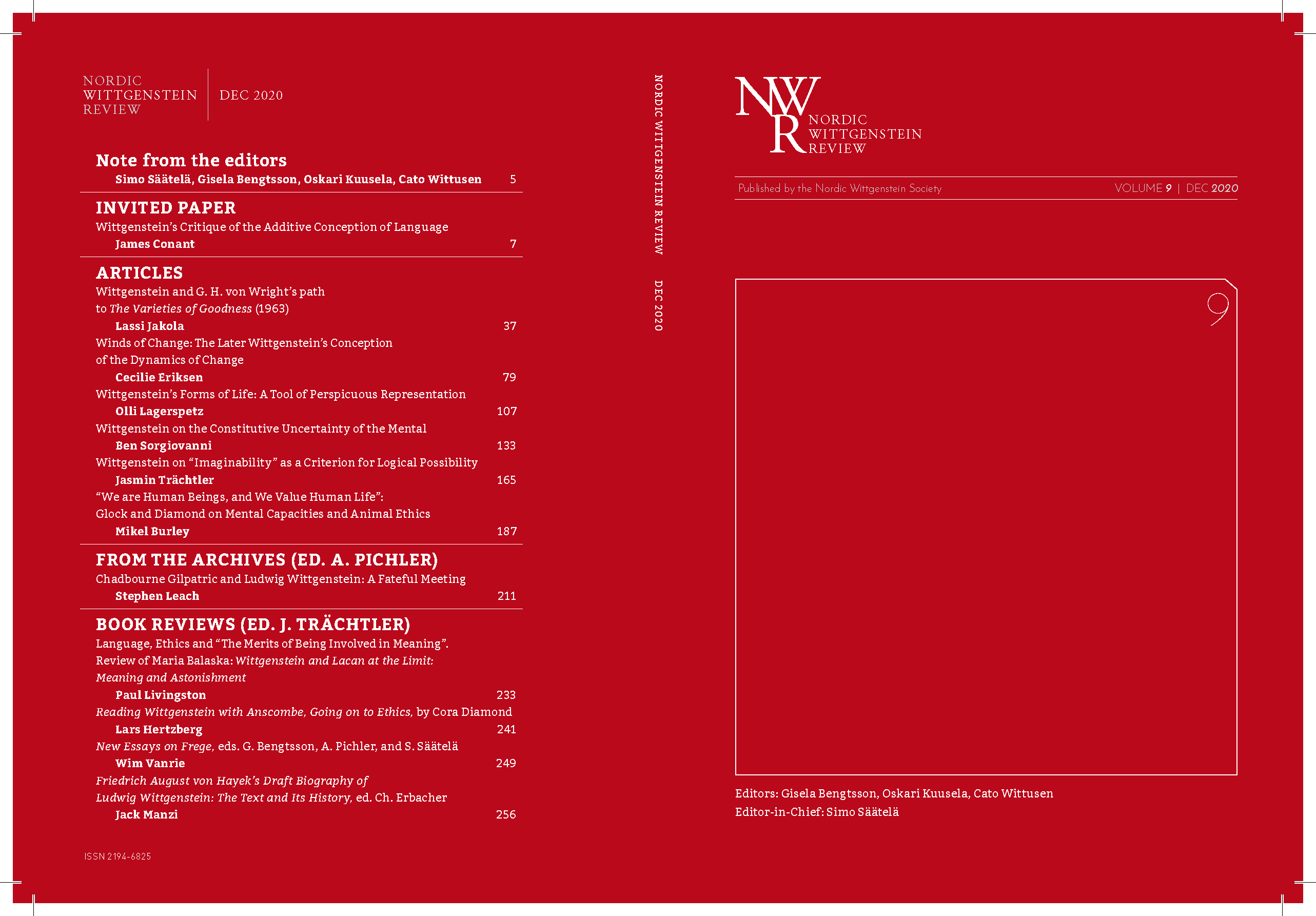Wittgenstein’s Critique of the Additive Conception of Language
DOI:
https://doi.org/10.15845/nwr.v9i0.3566Keywords:
sign/symbol distinction, Wittgenstein, the linguistic turn, philosophy of languageAbstract
This paper argues that Wittgenstein, both early and late, rejects the idea that the logically simpler and more fundamental case is that of "the mere sign" and that what a meaningful symbol is can be explained through the elaboration of an appropriately supplemented conception of the sign: the sign plus something (say, an interpretation or an assignment of meaning). Rather the sign, in the logically fundamental case of its mode of occurrence, is an internal aspect of the symbol. The Tractatus puts this point as follows: “The sign is that in the symbol which is perceptible by the senses.” Conversely, this means that it is essential to a symbol – to what a symbol is – that it have an essentially perceptible aspect. For Wittgenstein there is no privileged direction of explanatory priority between symbol and sign here: without signs there are no symbols (hence without language there is no thought) and without some sort of relation to symbols there are no signs (hence the philosopher’s concept of the supposedly "merely linguistic" presupposes an internal relation to symbols).
Downloads
Published
How to Cite
Issue
Section
License
Copyright (c) 2020 James F. Conant

This work is licensed under a Creative Commons Attribution 4.0 International License.
NWR uses the Creative Commons license CC-BY.
Vol. 1-3 used CC-BY-NC-SA. The collected works copyright ownership for Vol. 1-2 were shared by Nordic Wittgenstein Society and ontos Verlag/De Gruyter.








